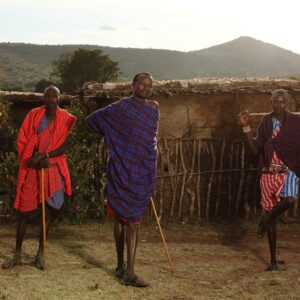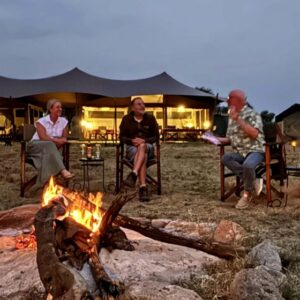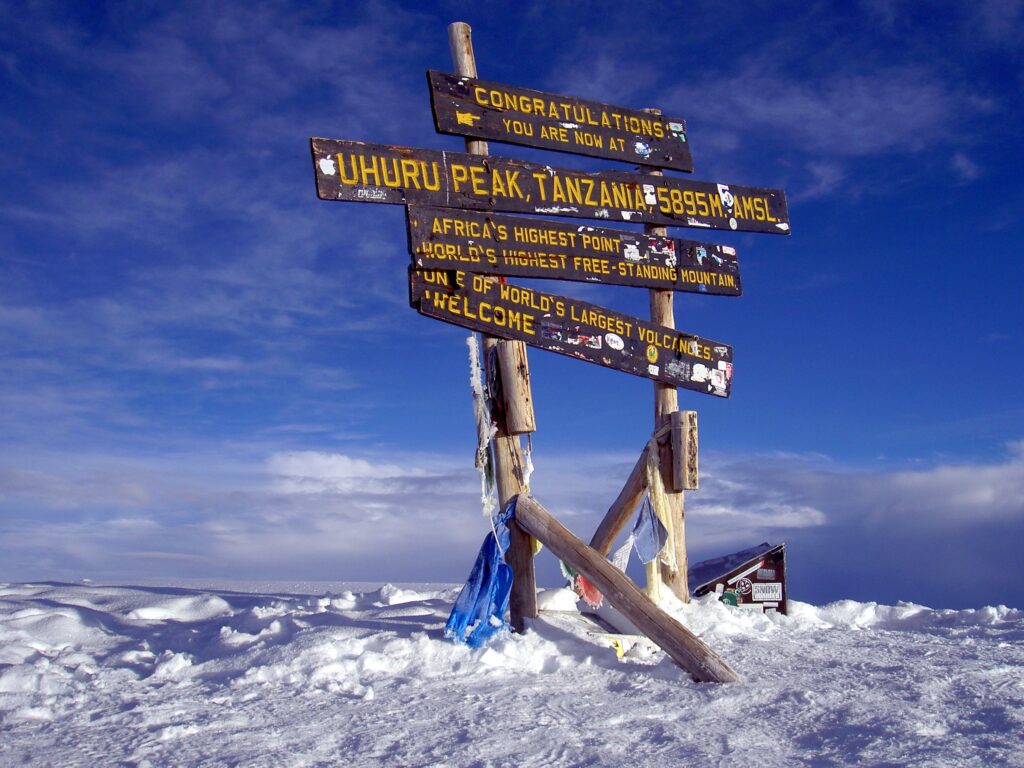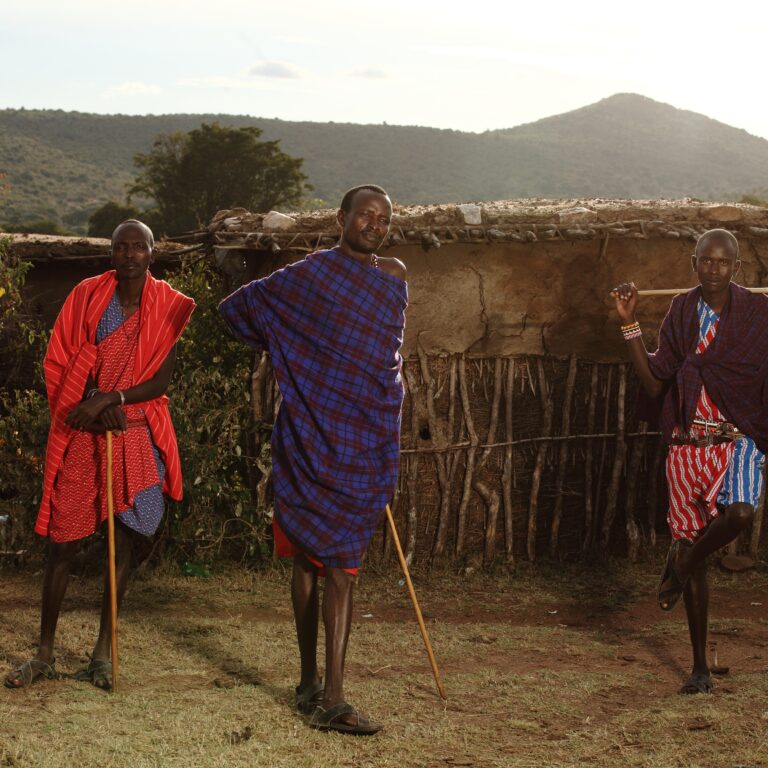A Serengeti walking safari offers an intimate and immersive way to experience the wild, allowing you to explore remote areas on foot with experienced guides and armed rangers, gaining a deeper understanding of the flora, fauna, and tracks that might be missed from a vehicle. You can choose between multi-day trekking safaris with mobile fly camps that move with you, or walking safari packages from a more permanent base camp for a comfortable, vehicle-free exploration.
When most people envision an African safari, they picture game drives in open 4x4s. But for those seeking a deeper connection to the wild, nothing compares to a Serengeti walking safari. This is not just a journey—it’s an immersion into one of the world’s most iconic ecosystems, experienced at the pace of nature itself. Far from the hum of engines, you’ll walk alongside expert guides, track wildlife on foot, and sleep under a sky ablaze with stars.
Key Aspects of a Walking Safari in the Serengeti
Key aspects of a walking safari in the Serengeti include safety protocols like being led by a specialized, armed guide and ranger, and an immersive, intimate experience that awakens the senses to the details of the landscape. Visitors can expect to traverse diverse terrain, Walking Tours in Serengeti National Park potentially witness the Great Migration on foot, and gain a new appreciation for both large and small wildlife and plants, which can be tailored to their interests.
Immersive Experience: Seeing the Serengeti Like Never Before
Unlike game drives that pass quickly through landscapes, walking safaris immerse you in every sight, sound, and scent of the bush. You’ll become part of the ecosystem, not just an observer. From the flutter of butterflies to the echo of a lion’s roar at dawn, the experience is raw, real, and profoundly grounding. Walking through the Serengeti sharpens your senses. You’ll learn to read animal tracks, identify medicinal plants, and understand the subtle clues that reveal the presence of predators or hidden herds.
Remote Exploration: Journey Off the Beaten Path
The Serengeti is vast—nearly 30,000 square kilometers of pristine wilderness. Walking safaris venture into corners of the park inaccessible by vehicle, where wildlife roams free and human footprints are rare. This remote access allows for an exclusive safari experience, where you’re unlikely to see another soul for days. Explore secret valleys, ancient kopjes (granite rock formations), and seasonal waterholes teeming with life—all without the noise or crowds of traditional safari routes.
Expert Guidance: Walking With the Best
A walking safari is only as good as the guides who lead it. That’s why all reputable Serengeti operators employ highly trained walking guides and armed rangers. These experts are skilled in wildlife behavior, bushcraft, and safety protocols, ensuring your journey is not only enlightening but also secure. Expect your guide to enrich every step with deep knowledge of animal behavior, ecology, and local Maasai culture.
Different Accommodation Styles: Tailored Comfort in the Wilderness
Accommodation for a Serengeti walking safari varies from luxury lodges and tented camps to more basic camping options, each offering different levels of comfort and immersion. Luxury lodges provide upscale amenities, while tented camps offer a comfortable, yet closer-to-nature experience, often with en-suite bathrooms. Budget-conscious travelers can opt for ground camping, while some tours may use mobile camps that are positioned strategically for migration viewing or walking safaris. Your Serengeti walking safari can be as rugged or refined as you like. There are two primary accommodation types to consider, each offering a unique atmosphere and level of comfort.
Mobile Fly Camps: Authentic and Adventurous
For purists seeking a true wilderness experience, mobile fly camps are the ideal choice. These lightweight, eco-friendly setups are carried by the safari team and assembled at new locations each night. The tents are simple but comfortable, often including proper beds, bush showers, and communal dining under the stars. Fly camps allow you to follow wildlife movements across the landscape and sleep in close proximity to nature’s rhythms—without leaving a trace behind.
Semi-Permanent Base Camps: Comfort Meets Wilderness
If you prefer a more stable and comfortable setting, semi-permanent base camps offer enhanced amenities while still immersing you in the bush. These camps stay in one area for a season and are strategically located near wildlife hotspots.
Expect spacious tents with ensuite bathrooms, solar lighting, lounge areas, and gourmet bush meals. This style suits those wanting to enjoy walking safaris without compromising on creature comforts.
Wildlife Encounters: Face-to-Face With the Wild
While walking, you’ll experience the Serengeti’s iconic wildlife from a completely new perspective. Being on foot levels the playing field between human and animal, leading to intimate, humbling encounters.
You may track elephants at a distance, observe giraffes grazing silently, or stumble upon a pride of lions in the shade. All interactions are carefully managed by guides to ensure both your safety and the wellbeing of the animals.
Birdwatchers will also be thrilled—over 500 species of birds call the Serengeti home, and many are more easily spotted while walking quietly through their habitats.
Tip: A Serengeti walking safari prices and cost can range from approximately $1,500 to over $10,000 per person, depending on the duration, level of luxury, and inclusions. Shorter, Serengeti walking safari cost budget options can start around $1,800 for a 4-day trip, while longer, more luxurious Serengeti walking safari packages for 7-10 days can be $5,000-$8,000+. Single-night or expedition-style experiences can also be priced per night, potentially costing $880-$1,540 per person per night.
What to Expect on a Serengeti Walking Safari
On a Serengeti walking safari, you can expect an immersive and intimate wildlife experience guided by professionals who prioritize your safety. This adventure involves physically engaging hikes, sometimes over rough terrain, where you will be taught to carefully observe details like animal tracks, insects, and plants that are often missed in a vehicle. While guides carry rifles for protection, the goal is a profound, sensory connection to the environment, often in remote areas away from other vehicles.
Guided Walks: Every Step a Discovery
Daily activities center around guided bush walks, typically early in the morning and late in the afternoon when temperatures are cooler. Walks vary from short, interpretive strolls to longer explorations covering several kilometers, depending on fitness and preference. You’ll stop often to examine tracks, observe animals from safe distances, and discuss the surrounding ecology. The pace is gentle and the focus is on observation, not exertion
Comfortable Camping: Rustic Luxury in the Wild
Whether you choose mobile fly camps or semi-permanent setups, you’ll be pleasantly surprised by the comfort level of these bush accommodations. Beds are warm, showers are hot (when heated over the fire), and meals are freshly prepared by skilled camp chefs. Dining often takes place outdoors with lantern-lit tables and panoramic views, creating a deeply romantic and atmospheric setting.
Safety: Priority From Start to Finish
Safety on a walking safari is paramount. All excursions are led by experienced guides and accompanied by armed rangers. Pre-walk briefings ensure you understand how to behave around wildlife and what to do in unexpected situations.
Operators use well-maintained communications systems, such as satellite phones or radios, to stay connected with support teams. In addition, routes are carefully chosen based on current wildlife movements, terrain, and seasonal factors.
Choosing the Right Walking Safari in the Serengeti
To choose the right walking safari in the Serengeti, consider what kind of experience you want, as different regions and safari styles offer unique highlights. Look for options that align with your preferences, such as the remote, adventurous feel of a fly-in, mobile camp safari, or the picturesque scenery of the Ngorongoro Crater Rim. Ensure the safari is with professional, trained guides and armed rangers to guarantee your safety.
For a Deeper Immersion: Go Mobile
If your goal is to connect with nature at its most raw and unfiltered, mobile fly camping safaris offer unmatched access and authenticity. They are ideal for seasoned travelers or adventurers who relish the idea of going where vehicles can’t follow.
This style is perfect for those who want to focus on animal tracking, primitive skills, and remote landscapes, often moving camp every night or two.
For Comfort and Convenience: Choose Semi-Permanent Camps
If you’re looking for a blend of wilderness and luxury, opt for a semi-permanent base camp experience. These allow you to return to the same comfortable tent each night, enjoy hot showers, and even sip wine around the campfire. This style suits couples, older travelers, or first-time safari-goers who want the thrill of walking safaris but with added ease and elegance.
Ultimate travel tip: Serengeti walking safari reviews: Serengeti walking safaris generally receive positive reviews for providing an adventurous, intimate way to experience the wilderness, with guests highlighting the expertise of guides and the feeling of being “in the moment”. Positive experiences often mention excellent guides who are knowledgeable and skilled at spotting wildlife, leading to a deeper understanding of the ecosystem. Some negative reviews, though less common for walking safaris, point to poor organization or management, with one traveler complaining about wasted time and broken promises from a specific company.
Consider the Time of Year: Seasonal Impact on Safari Quality
The best time for a walking safari in the Serengeti depends on your priorities: June to October (dry season) offers the best wildlife viewing because animals congregate at water sources, but vegetation is thinner. November to May (green season) provides lush scenery and newborn animals, but taller grass can make spotting wildlife harder, and paths can be muddy. Walking safaris are most pleasant in the dry season due to clear, sunny weather and easier terrain. The best time for a Serengeti walking safari depends on what you want to experience:
Dry Season (June to October): Best for long walks, fewer insects, and excellent wildlife visibility.
Green Season (November to March): Lush landscapes, birdwatching, and fewer tourists, but walking can be more challenging in muddy areas.
Great Migration (varies by location): Choose a walking safari that aligns with the path of the wildebeest migration for extraordinary wildlife density and action.
Always check with your safari operator regarding weather patterns, camp availability, and wildlife movements to plan your trip accordingly.
Why Choose a Serengeti Walking Safari?
A Serengeti walking safari offers more than just wildlife sightings—it delivers profound moments of connection, silence, and awe. You become a part of the landscape, walking ancient trails where predators roam, birds sing freely, and the sun rises over endless savannahs. For those who seek more than snapshots, for those who crave depth over luxury, and for those who dream of Africa as it once was—this is your safari.
Choose a Serengeti walking safari for a more intimate, sensory-rich, and adventurous experience that goes beyond traditional game drives by allowing you to explore the ecosystem on foot. It provides a unique opportunity to connect with the environment through sounds, smells, and details often missed in a vehicle, such as animal tracks and medicinal plants, while also allowing access to more remote areas with a focus on safety and exclusivity.
Serengeti by Foot – A Life More Extraordinary
Serengeti by Foot – A Life More Extraordinary” is a title that describes an immersive, high-adventure travel experience in the Serengeti National Park, known for its “endless plains” and the incredible wildlife spectacle of the Great Migration. The phrase likely refers to a journey that goes beyond typical game drives to offer a closer, more personal connection with the vast and ancient ecosystem, which is home to the largest lion population in Africa and millions of migrating animals. This type of tour would allow one to witness the unique biodiversity and, potentially, interact with the Maasai culture, which has deep historical ties to the land.
FAQs: Serengeti Walking Safari
Planning a Serengeti walking safari comes with many questions—especially if it’s your first time venturing into this immersive style of exploration. Below some of the most frequently asked questions to help you prepare for a safe, exciting, and unforgettable experience in the wild.
What is a Serengeti walking safari?
A Serengeti walking safari a guided trek on foot through selected areas of the Serengeti National Park or surrounding reserves. Unlike traditional safaris conducted in vehicles, walking safaris allow you to experience the African bush at ground level, offering a more intimate and immersive wildlife experience.
Is it safe to walk in the Serengeti?
Yes, walking safaris very safe when organized by licensed operators. Youre always accompanied by professional guides and armed rangers who trained in wildlife behavior and emergency protocols. Routes carefully selected to avoid unnecessary risks.
How fit do I need to be for a walking safari?
Walking safaris not physically demanding for most travelers. Daily walks typically range from 5 to 10 kilometers (3–6 miles), at a relaxed pace with frequent stops. However, a moderate level of fitness and comfort walking on uneven terrain recommended.
What kind of wildlife can I see on the Serengeti on foot?
On a walking safari in the Serengeti, you can see a variety of wildlife, including the “Big Five” (lion, leopard, elephant, buffalo, and rhino), numerous other mammals like giraffes, cheetahs, and wildebeest, and a diverse array of birds. You can also encounter smaller creatures such as the “Little Five” (the elephant shrew, buffalo weaver, lion ant, leopard tortoise, and rhino beetle) and various insects. The focus is more on tracking, signs, and smaller wildlife interactions than close-up views of big cats, which are best seen on game drives.
Can I combine a walking safari with game drives?
Absolutely. Many safari itineraries combine walking safaris with traditional vehicle-based game drives to offer the best of both worlds. You can enjoy the immersive nature of walking in the morning and relax on a game drive in the afternoon or vice versa.
When is the best time for a Serengeti walking safari?
The dry season (June to October) is generally the best time, as trails are more accessible, and wildlife congregates near water sources, making sightings easier. However, the green season (November to March) is beautiful for birding and scenery, though some areas may be muddy.
What should I pack for a walking safari?
For a Serengeti walking safari, pack lightweight, breathable clothing in neutral colors, sturdy walking shoes or hiking boots, a wide-brimmed hat, sunglasses, and a daypack. It’s also essential to bring layers for cooler mornings and evenings, such as a fleece or windproof jacket, as well as a first-aid kit, insect repellent, and a camera with binoculars. Key items to pack include:
• Lightweight, neutral-colored clothing
• Comfortable walking boots
• Wide-brimmed hat and sunglasses
• Reusable water bottle
• Insect repellent
• High-SPF sunscreen
• Binoculars
• Personal medications
• Camera (preferably with zoom lens)
A detailed packing list is usually provided by your safari operator.
Is there an age limit for walking safaris?
Most operators require participants to be at least 12 to 16 years old, depending on the difficulty and wildlife density of the area. There is usually no strict upper age limit, but all participants should be reasonably fit and mobile.
What are mobile fly camps like?
Mobile fly camps lightweight, temporary tented camps that move with the group. Despite their simplicity, they offer surprising comfort: proper beds, bush showers, toilets, and delicious meals cooked over the fire. They provide the most authentic, close-to-nature safari experience.
What if we encounter dangerous animals?
Your guide and ranger trained to handle wildlife encounters calmly and safely. You’ll receive a safety briefing before each walk, including instructions on how to behave around wild animals. Most animals will avoid humans on foot, especially when approached respectfully.
Are Serengeti walking safaris eco-friendly?
Yes, walking safaris one of the most sustainable and low-impact ways to explore the Serengeti. Camps are typically solar-powered and leave minimal trace, and travel by foot greatly reduces the carbon footprint of your safari.
Do I need travel insurance for a walking safari?
Yes, comprehensive travel insurance essential, and it should include emergency evacuation, medical cover, and trip cancellation protection. Always confirm that your policy covers adventure travel in remote areas.
Can I go on a walking safari solo?
Solo travelers welcome, but walking safaris conducted in small groups for safety and logistics. You’ll be matched with a group or can book a private safari if you prefer a more personalized experience.
Are there bathroom facilities during walks?
During walks, there no permanent bathroom facilities. Nature becomes your restroom, and your guides will instruct you on proper bush etiquette. In camp, you’ll have access to clean, eco-friendly toilets and showers.
How do I choose the right walking safari operator?
To choose the right walking safari operator, research their reputation through reviews and recommendations, verify their safety standards and guide experience, and confirm the trip details match your budget, interests, and desired duration. Look for operators with experience in the specific areas you want to visit and consider whether a local operator or a group safari might be a better fit for your needs. Look for companies that:
• Licensed and insured
• Employ professional walking guides
• Have strong safety protocols
• Offer clear itineraries and support
• Committed to eco-tourism principles
Check online reviews, safari forums, and request references if needed.
Is tipping expected on walking safaris?
Yes, tipping customary and appreciated. Suggested amounts vary by operator, but generally you should budget to tip your guide, cook, and camp staff separately. Some operators provide tipping guidelines in advance.
7-Day Tanzania off the Beaten Track Safari
What to Expect on a Walking Safari in Africa
Ndutu Kati Kati Tented Camp
Complete Guide To Walking Safari in Tanzania
What Can You Expect from a Guide on a Tanzania Safari?
How to plan and book a Serengeti Walking Safari?
To plan and book a Serengeti walking safari, research and contact a few reputable tour operators, compare their walking safari packages, and confirm availability and inclusions for your dates. Start by determining your budget, time, and desired experience, then book the tour, which typically requires a deposit and paying the remainder before the trip. Most travelers book through an operator who handles logistics like park fees and internal flights.
Complete guide to Serengeti walking Safari
A Serengeti walking safari offers a more intimate, up-close experience with wildlife, but requires following strict safety guidelines to stay calm and keep a safe distance from animals. Planning involves booking well in advance, particularly for peak seasons, and packing essentials like neutral-colored clothing, sturdy shoes, sunscreen, insect repellent, and binoculars. Itineraries vary, but can involve fly-camping or staying at a semi-permanent camp, with walks focusing on tracking, exploring kopjes, and observing the environment.
Add on: Ngorongoro Walking Safaris
Ngorongoro walking safaris offer a unique way to experience the Ngorongoro Conservation Area on foot, guided by experienced naturalists and often accompanied by an armed ranger for safety. Options include guided walks along the crater rim for panoramic views or treks through the highlands and smaller craters like Olmoti and Empakai for a more secluded experience. These safaris provide opportunities to get close to wildlife, learn about the unique geology, and gain insight into the local Maasai culture.
Tip: Where to go on a walking safari in Tanzania?
You can go on a walking safari in both Arusha National Park and Tarangire National Park, but they offer different experiences. Arusha National Park is ideal for short, guided walks at the foot of Mount Meru, allowing you to get close to animals like giraffes, zebras, and monkeys in diverse landscapes including waterfalls and volcanic craters. Tarangire National Park is also a great option for guided walks, often focusing on the area along the Tarangire River to see its large elephant population and learn about the local flora and fauna.








